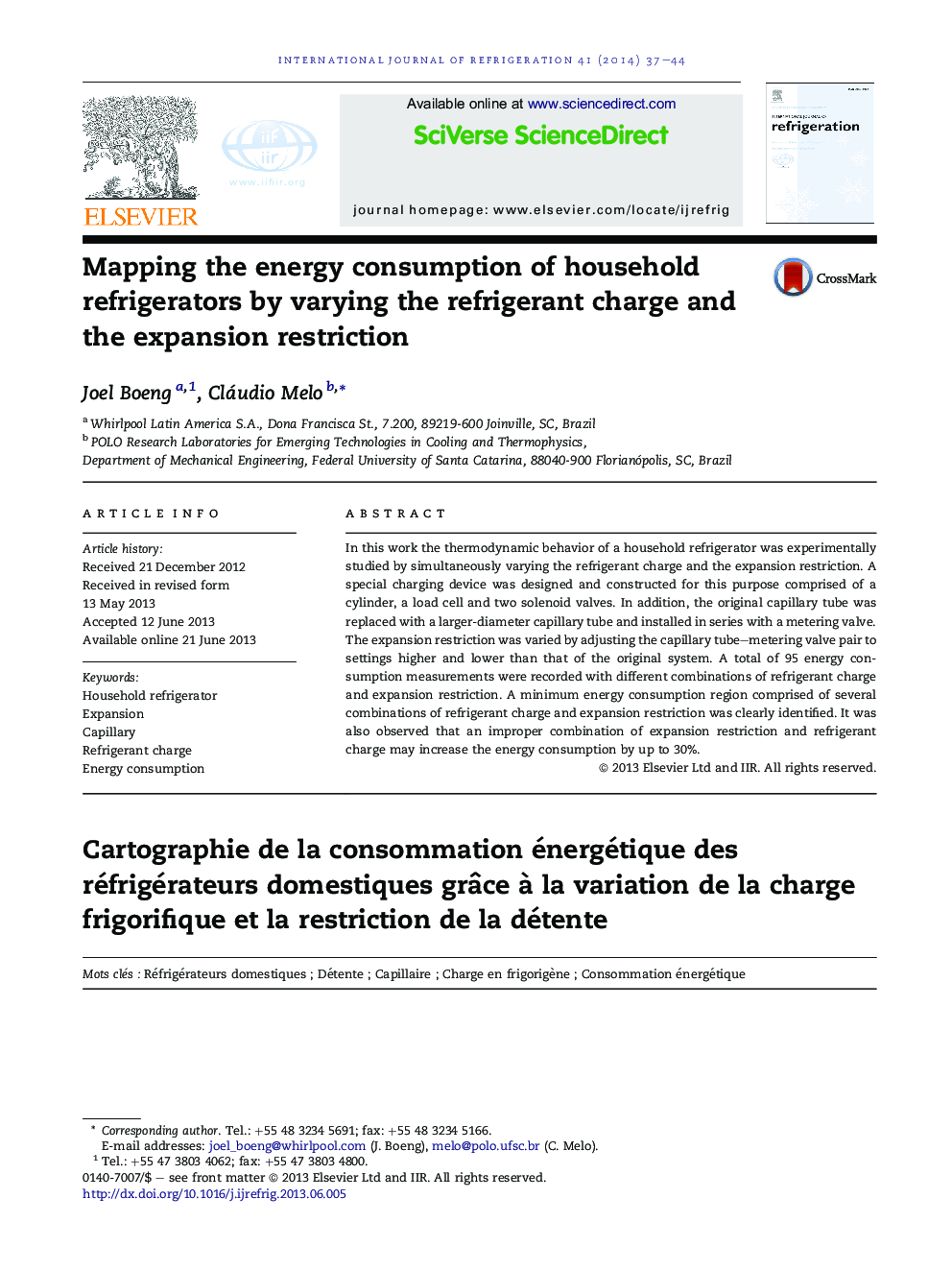| Article ID | Journal | Published Year | Pages | File Type |
|---|---|---|---|---|
| 789387 | International Journal of Refrigeration | 2014 | 8 Pages |
•The energy consumption is affected by both the refrigerant charge and the expansion restriction.•At lower restrictions the refrigerant mass flow rate is passively ruled by the flow regime.•At higher restrictions the refrigerant mass flow rate is actively ruled by the capillary tube.•The maximum coefficient of performance and cooling capacity do not coincide.
In this work the thermodynamic behavior of a household refrigerator was experimentally studied by simultaneously varying the refrigerant charge and the expansion restriction. A special charging device was designed and constructed for this purpose comprised of a cylinder, a load cell and two solenoid valves. In addition, the original capillary tube was replaced with a larger-diameter capillary tube and installed in series with a metering valve. The expansion restriction was varied by adjusting the capillary tube–metering valve pair to settings higher and lower than that of the original system. A total of 95 energy consumption measurements were recorded with different combinations of refrigerant charge and expansion restriction. A minimum energy consumption region comprised of several combinations of refrigerant charge and expansion restriction was clearly identified. It was also observed that an improper combination of expansion restriction and refrigerant charge may increase the energy consumption by up to 30%.
